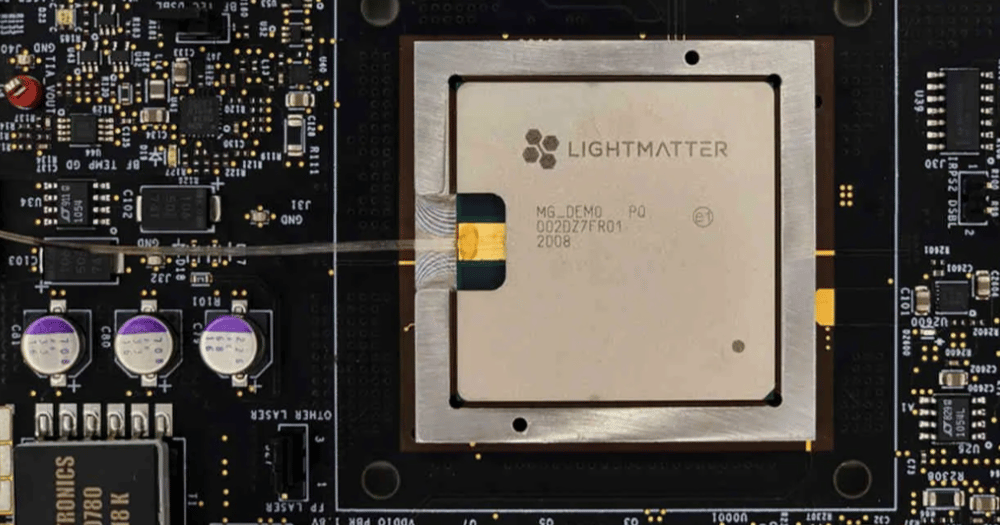

Lightmatter, a startup valued at 4.4 billion dollars, has once again demonstrated its commitment to technological breakthroughs. On Monday, the California-based company from Mountain View unveiled two innovative technologies designed to dramatically accelerate the communication between artificial intelligence chips. Departing from the traditional method of transmitting data via electrical signals, these new solutions harness optical connections and silicon photonics to transfer information using light. Such an approach promises to significantly enhance the efficiency of systems employed in chatbots, image generators, and various other AI-driven applications.
With an impressive 850 million dollars in venture funding, Lightmatter has attracted considerable attention from investors in Silicon Valley. The latest advancements in optical technology are increasingly seen as the future of digital processing, providing a viable solution to the data transmission bottlenecks in modern computing architectures. By using light in place of electrical signals, Lightmatter’s innovations offer undeniable benefits such as increased bandwidth, reduced power consumption, and minimized heat generation—key factors in the race towards more scalable and efficient AI systems.

Lightmatter’s technological achievements mark a pivotal shift in the way data is transferred between AI chips. The integration of silicon photonics not only decreases data latency but also paves the way for developing higher-performing computing systems. In a fiercely competitive landscape, such innovations are becoming critical for maintaining leadership and efficiency in AI development.
Adapting these new technologies into existing IT infrastructures could yield several significant advantages:
1. Accelerated data transmission by utilizing light instead of conventional electrical signals
2. Reduced energy consumption, thereby cutting operational costs
3. Lowered heat production, which in turn extends hardware longevity
4. Enhanced system performance through optimized communication processes
5. Improved scalability of computing infrastructures as new AI applications emerge
These benefits underline the growing relevance of optical technology in meeting the demands of rapid and reliable data exchange, a necessity in today's fast-evolving technological environment.

Transitioning from electrical signals to optical connections opens up an array of promising opportunities for Lightmatter. The adoption of silicon photonics is expected to catalyze further improvements in data processing and overall system performance. Among its potential benefits are:
• A significant boost in system throughput
• Lower costs associated with cooling and power consumption
• Enhanced stability and reliability of computing infrastructures
• The emergence of new architectures and operating models tailored for AI systems
• Strengthened competitive positioning in the global high-tech arena
Using optical techniques for data transfer stands to not only expedite the processing of enormous data volumes but also to streamline the entire AI development pipeline. As data demands continue to soar, the need for faster and more efficient transmission technologies becomes an essential driver for innovation in various digital sectors.

Lightmatter’s future success will largely depend on its ability to integrate these new technologies into the broader ecosystem of AI development. Key factors influencing the company’s trajectory include:
1. Continuous technology enhancement and market adaptation
2. Effective deployment of investment capital to advance and implement innovations
3. Establishment of strategic partnerships with leading technology firms in Silicon Valley
4. Optimization of manufacturing processes to reduce costs during scaling
5. Training of skilled professionals adept at handling emerging optical technologies
However, alongside its obvious benefits, the integration of optical technology presents several challenges. One major concern is the compatibility with existing data transfer standards, necessitating updates to equipment and the development of new security protocols. Additionally, updating and adapting the current infrastructure to support these state-of-the-art methods demands considerable time and financial commitments. Despite these obstacles, Lightmatter’s advancements continue to highlight significant potential for technological progress, potentially serving as a catalyst for profound changes in the global IT industry.
Innovative approaches in tech investments are sparking a transformative shift that redefines the landscape of automation
This sale is poised to trigger a seismic shift in how tech companies integrate automation